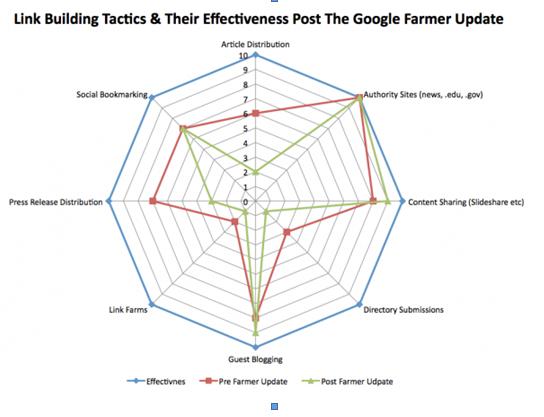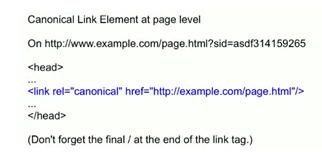Top 12 SEO Tips for 2011 (Q2-Q3) - Post Panda
There are many basic-to-advanced SEO tactics that you can read in earlier versions of Top 12 SEO Tips for 2006-2007 that are still spot-on in terms of the current state of SEO. This year though I timed it right and the Panda Update was just released a week or two back.
After a major update I would normally get together with a bunch of other SEO freaks and do some testing to get real data to back up my conclusions. This time however the research was already done. The same things work now that worked 4 or 5 years ago, just in a different proportion.
Most of the tips below directly relate to the Panda Update in some way because the basis behind this update in my mind is saturating the amount of information utilised to establish the most relevant pages in Google. They are doing this with LSI, social media and information from third party bookmarking companies like Furl, Facebook and Reddit. This makes it much harder for SEO’s to manipulate the results and easier for Google to identify sites attempting to engineer the results in their favour.
I’ve spoken many times in the past on Latent Semantic Indexing or LSI as it’s known. Its use by all 3 search engines started years ago for various reasons and now it is being injected into Google’s algorithm more than ever before in the newest release of the “Panda” or “Farmer” update. Unlike the Jagger or the Caffeine updates, this directly targets sites by using LSI along with other triggers.
For those of you that don’t live and breathe all things SEO, LSI is best defined,”Latent semantic indexing allows a search engine to determine what a page is about outside of specifically matching search query text. By placing additional weight on related words in content LSI has a net effect of lowering the value of pages which only match the specific term and do not back it up with related terms.” That was SEO Guru Aaron Wall’s description and probably the best one when put into ‘layman’s terms’.
Over the last 4 years LSI has been in nearly half of the conferences at which I have had the opportunity to speak, but unfortunately only by me it seemed. I started talking about it back when the ‘Minus 950’ penalty hit in one month and Universal Search was released the next.
At that time I told of Google buying a US based company named Applied Semantics in April of 2003 to further their research on algorithms. Google even talked about the residual integration of LSI publicly. So did MSN and Yahoo. Yahoo even applied for a patent on their own version. The odd thing was, although these conferences were considered advanced (Gaming, Affiliate and SEO) no one else was talking about it.
Google has been testing LSI in speech recognition software, cross-language document retrieval and search engine integration, as well as many others for a long time. It’s a bit scary when you think about it. The military used this stuff to identify terrorist chat amidst billions of spoken words in a short time frame.
When you apply this powerful tool to search, you reduce the potential of engineered results from guys like me - SEO’s. Because it looks at relative terms, it makes it 1000 times harder to “game” the algorithm because of the number of terms that could be considered relative. Apply this to environments like social networks add in sloppy linguistics, slang, native language and a little local salt and you can get a lot of variables. That’s the data Google has at their disposal to analyse. Even scarier when you consider that Google gets their information from everything you do. Ever think about the fact that Google GMail serves up Adsense ads in your email that have some relevance to the actual content in your email?
Techniques like buying links with relative anchor text takes on a whole new meaning when you add LSI into the mix.
I personally think that with all the data Google has now collected, they can finally utilise the findings of Applied Semantics and build their own sort of “Semantic Synonym” dictionary and use it as an algorithmic plug in at will.

(Source: Smart Insights Digital Marketing)
It makes sense that they would use this ability and possibly even have a knob to turn it up or down. The easiest way to reduce the ability of SEO’s is to manipulate the results, to spread the area (or add the information) into the playing field and water down their ability. At the same time they may truly have started their way toward delivering a top-notch set of results.
Universal Search was meant to do this back in 2007 and although it helped to jumble the type of results, there were too many blogs, articles and undoubtedly some spammy sites too. They have been tweaking it ever since, and average one update per day.
So the significance of LSI or Longtail keyword targeting is a huge part of life and although it seems daunting, successful SEO can still be broken down into manageable terms. It may require that you outsource much of the grinding work like content writing but much of the tasks I paid tens of thousands to get accomplished over the past 10+ years have been automated.
There are a few new elements like Social Media, Web 2.0 and Social Bookmarking but even these can be managed.
One other thing that I would like to say before jumping into the Top 12 SEO Tips for 2011 that’s is something that really needs to be said; Before April 12th the playing field was dominated and even though it still is to a point, the long tail variable in Google has opened the gates for people that have struggled in the past.
Here are the facts: 25% of all searches are 1st time searches. That is a stunning statistic.
When you combine that fact and if you are measured on conversions and conversion rates in whatever you do, then this next statistic will really open your eyes. 60% of all conversions come from this 25%. That’s a conversion rate of 15%. When you consider the average conversion rate across all sectors is between 3-5% and in gaming its 1 ½ to 2%, 15%, sounds pretty good. Well, you would think.
When I get ambitious SME’s or Top FTSE/Fortune 500 companies questioning whether or not an investment in a SEO, PPC and Social Media mix for 12 months is worth the risk it “twists me melon” (I live in Yorkshire, England and have been trying to fit that in somewhere but coming from an American it just doesn’t sound right). What other investment can you be out of the red in 6-12 months? What business school did these people go to?
Whether its gaming, forex, binary options, memory foam mattresses or pet supplies, you can make money very quickly when SEO, PPC, Social Media and Conversion Optimisation are implemented correctly. It has always been a “sure bet” scenario but now the Farmer Update has increased these odds.
If you are an Affiliate this is huge because we have always targeted long tail, or had to target long tail because of big investment and/or brand protection in PPC.
So where some feel this will hurt them, look at it this way; Affiliates have always delivered 40% of the income of any given company regardless of sector since time (Internet time that is) began and this will not change. Plenty of the top Super Affiliate website have had good content and are neck-deep in social media and everything I have suggested to this point for some time now. Have a look at Bingoport, they are both Top Notch SEO’s and Social Media Strategists.
So just to finish on this thought and move on; if you haven’t financially prepared yourself for a 12 month building process then you shouldn’t be investing in what you see as such a high risk endeavor. Some will reach the top 10 very quickly depending on the niche and most will start to offset the expenses almost immediately using PPC (pay per click) but it’s now going to take a bit longer and take more effort.
Here is a mix of on and off page tips that I feel are currently the most significant.
1. Navigation (on-page SEO elements)
Use your canonical tag - The canonical tags prevents losing juice from back links that may have been used wrongly. WWW versus a non-www url in the links pointing back to your site. The canonical tag tells the search engines which page is your primary and redirects the link juice to that page. You can also manually tell Google in Webmaster Central which url is your selected primary. This will also prevent duplicate content.
Keep your url’s clean
Session ID’s and messy URL’s should be rewritten to include keywords. If you have a CMS (content management system) this can be as simple as a plugin. Using capital letters instead of lower case can also be an issue.
Don’t use ‘rel’ tag when you can use absolutes
Using a relative tag has the potential to confuse the search engines. Absolute tags are very powerful when used correctly and too when compared side to side with a relative tag. This is part of the silo method of building or rebuilding your site.
Check for infinite loops
Most programs like Joomla have auto-detection for these but its always a good idea to run Screaming Monkey to look for loops. Some sites use a plugin that will create links automatically from a selected keyword to the internal page targeting that term.
Identify duplicate content issue with cross-domain rel=”canonical” link element
Ecommerce sites that are fed by xml product feeds are known for causing this issue because they syndicate their descriptions along with their products but sometimes it can be caused by the shopping cart software creating multiple paths to the same content.
If someone was searching for holidays in Greece and this content can be reached by several paths within your site you may have an issue.
■http://www.example.com/products/greece/holidays
■http://example.com/shop/index.php?product_id=32&highlight=greek+holiday+specials&cat_id=1&sessionid=123&affid=431>
■http://example.com/greece/specials?gclid=ABCD
■http://www.example.com/dresses/greekholidays.html
Also, many website owners have more than a single website but use the same content feeds for both. This link element can also resolve this issue.
Canonical Link Element at page level
Alternatively, If you don’t have access to server-side redirects and you can’t use a 301 redirect (free hosting or no access to changing the code) you can use the Canonical link element.
First Link Rule
According to Rand over at SEO Moz and copious other research by several people, Google only counts the first internal link in your page. Use CSS to prevent this from happening on your header logo if it (and a link to the homepage) comes first in your code.
I knew about the ‘first link rule’ for content but wasn’t aware of this application of it. It seems like when Google initially crawls and parses a site the header would be considered part of the template and ignored as it looked for new content.
If you look at log files and when googlebot crawls a website you see they have frequent ‘small crawls’ and at other times, ‘deep crawls’. Both are progressively more frequent if there is a regular stream of fresh content near the root.
When Google started constant crawling and updating a year or two ago, they said they were deep crawling even more often but were optimising their crawl. So did they buy a million more servers? No they optimised the way the bots crawl by eliminating the time spent on looking at duplicate code throughout the website.




thank’s. i like it